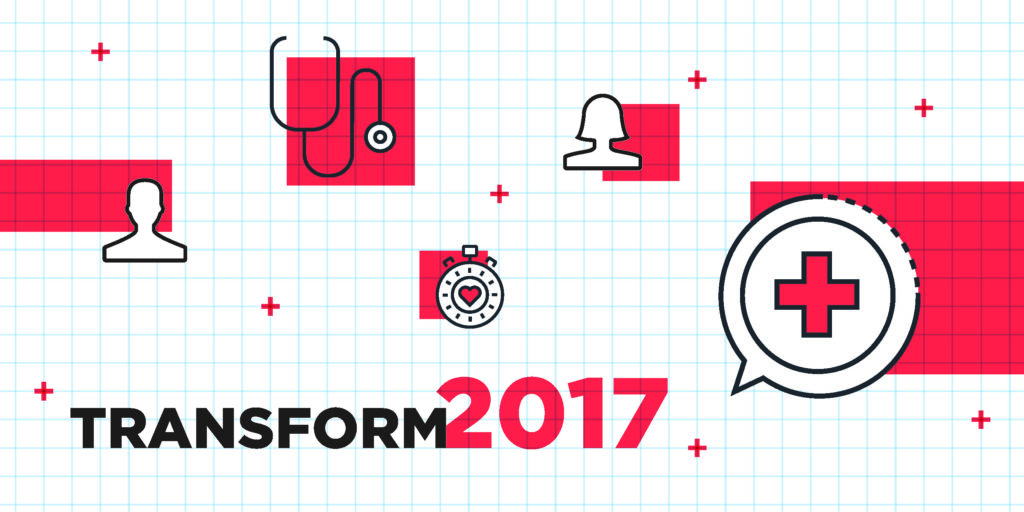
Closing the Gap Between People and Health: Transform 2017.
While the U.S. spends more on health care than any other country, its health outcomes are less impressive. In fact, they’re well below those of other high-income nations. This is certainly no secret to anyone who has followed the news or political debates of the past few years. The solution, however, isn’t an easy one, as physicians, administrators and healthcare innovators from all corners of the country noted at Mayo Clinic’s Transform 2017 conference.
We joined these leaders and creative thinkers in September for a wide-ranging discussion of the industry’s most pressing issues — from value-based care to interoperability to the potential for disruption. The conversation boiled down to one daunting question: How do we restructure the system so that providers can fulfill the purpose that brought them to medicine in the first place and patients can actually get the care they need?
Here are some of our key takeaways.
Conversations matter — but there’s little time for them.
Today, a doctor gets paid far less to have a conversation with a patient than to perform a procedure — even though conversation may be the cheapest and most effective tool. Danielle Ofri of the NYU School of Medicine noted that cost pressures, regulatory requirements and administrative paperwork keep physicians feeling like “hamsters on a wheel,” spending far more time on administrative tasks than on patient care (in some studies, by a ratio of 2:1). Patients feel the imbalance too. Speaking with their physician for only a few minutes at a time and then being prescribed medication that doesn’t make them better creates an underwhelming experience at best – and a harmful one at worst.
We must redefine the value equation.
In a situation so dire, it may seem the only choice is between spending more to increase outcomes or cutting spending and worsening inequities. But there is another way: increasing healthcare value, and thus reducing costs and increasing quality of care.
Value = Health outcomes that matter to patients / Cost of full cycle of care
Determining value, however, depends on being able to define health outcomes. As they are traditionally measured, these rarely include what matters most to patients. Elizabeth Teisberg of Dell Medical School proposed three alternative measures of what patients value most:
- Capability: The ability to get back to things one used to be able to do
- Comfort: Relief from pain and suffering
- Calm: The stability to continue participating in one’s individual and family life
Evolving the ways we measure outcomes is just one way to begin closing the gap between patients and providers.
Analyzing the right data is key.
Health care lags behind many U.S. industries when it comes to interoperability and the meaningful use of big data. Electronic health records (EHRs) may have been a leap forward, but their usefulness is limited by variation in provider adoption — leaving them to perform essentially the same role as medical records of the past, albeit digitally. Without integration, collaboration between systems, and “sift and serve” capabilities that help physicians find what they need, pooling data just means that the haystack surrounding the needle they are looking for gets larger.
The data we collect today can also be misleading. “Beware of surrogate end points,” warned Darshak Sanghavi of OptumLabs, noting that the data points we often measure and incentivize may reflect a short-term goal that does not correlate with the more meaningful long-term goal. It is essential that the right questions are being asked, and that the long-term goals that matter are established, before we celebrate the power of data to solve our healthcare challenges.
Innovation can help close gaps.
As technology evolves while systemic challenges remain, there is a growing possibility that disruptive solutions could come from the outside. Many of the speakers at Transform believe that these kinds of innovations are needed to force the transition to value-based care and to achieve a better return on our investment in health care as a nation.
However, it is also important to remember that true innovation goes beyond flashy technology. Americans’ health care needs today are not acute problems with a quick fix. Instead, they are often chronic conditions requiring sustained lifestyle change, and they revolve around the social determinants that shape patients’ lives outside of clinical spaces. As Andy Slavitt of the Bipartisan Policy Center put it, the patient we need to serve better is not just the healthy 60-year-old who wants a wearable that can upload his run times to his doctor; it’s the low-income woman who has to take two buses to get to dialysis and keeps missing her appointments. Right now, ZIP code is a better predictor of life expectancy in America than genetic code — and only when that inequity is addressed will health care truly be transformed.
Let’s keep the conversation going.
Connect with Fusion Hill to learn how we’re helping innovators in the healthcare space tell their story.
October 11, 2017 | Research





